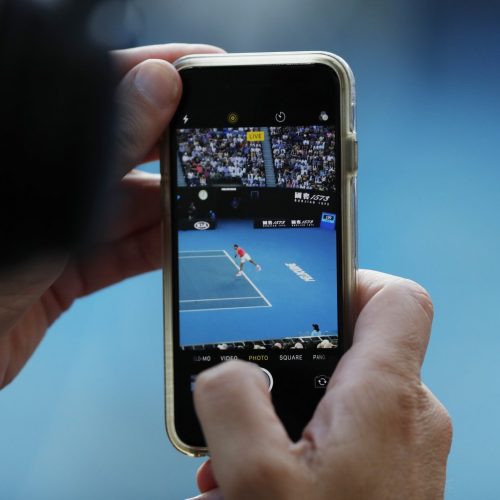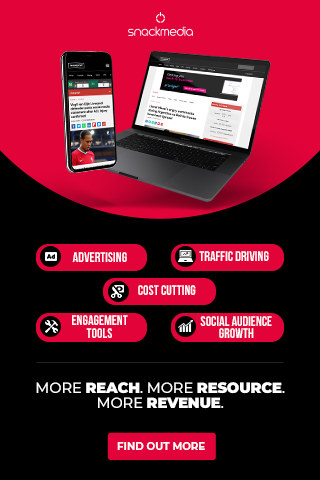Participation sport can raise its game via smart use of technology
When it comes to sport, some governments focus their attention on the elite side as opposed to the participation or grassroots side. It’s all about medals and winning at the highest level!
For example, in late 2016, Sport England (the body responsible for getting more people active) announced £88 million in grassroots sport funding over the proceeding four years. This followed an announcement that elite sports funding body UK Sport would be investing £345 million in 31 Olympic and Paralympic sports (including Olympic Games medal targets for Team GB) over a similar period.
There is no easy formula to help governments or their funding bodies to find the right balance. What is not in doubt is that grassroots and elite investments must work in harmony and can’t be made in isolation.
This blog seeks to define participation sport, looks at one country where growing participation is a key focus and outlines some ideas to assist governments to leverage technology to increase participation.
What is participation sport?
In its simplest form, participation or grassroots sport is all about taking part in active sport for fun and enjoyment. It is concerned with the masses rather than the few.
Physical exercise can bring many benefits to a society namely;
– Improve the healthy lifestyle and wellbeing of citizens by, amongst other things, promoting healthy eating or removing stigmas around mental health (for example, the Irish FA created a health programme with local government that focused on promoting nutrition and tackling mental health throughout Northern Ireland).
– Facilitate positive social interactions and inclusion (for example, the FARE Network has created a database of grassroots organisations, teams and football clubs that are actively welcoming refugees or organising training sessions and other initiatives to help refugees).
-Help to improve community engagement and reduce crime (for example the FA of Ireland created a programme working in high crime areas).
– Increase education levels (through formal education courses such as coach education as well as informal learning e.g. using sport to develop skills such as leadership, teamwork and communication).
Northern Ireland: a government that focuses on participation sport
Northern Ireland is a sporting nation and has produced the likes of George Best (football), Joey Dunlop (motorcycling), Rory Mcllroy (golf), Alex Higgins (snooker) and many more, with a small population of only 1.8 million!
There are several reasons why Northern Ireland has produced many greats but one is the participation in sport for fun, recreation and enjoyment from an early age.
The Northern Ireland government has sought to capitalise on sport by producing a long-term strategy for sport. The strategy was introduced in 1997 and redeveloped covering the period 2009-2019. This long-term approach has been vital to its success.
‘Sport matters’ seeks to create a culture of lifelong enjoyment and success in sport. The strategy focuses on the three broad areas of participation (playing for fun and enjoyment), performance (elite athletes) and places (sporting facilities).
The strategy incorporates 26 high-level targets and priorities for sport and recreation over the current 10-year period each falling under one of two primary development outcomes: increased participation in sport and physical recreation and improved sporting performances.
The high-level targets in the strategy set out to deliver an increased number of children and adults experiencing, enjoying and participating in high quality sporting opportunities.
What role can technology play in driving participation sport?
Technology continues to disrupt and offer opportunities in equal measure. Therefore one important question for governments in this area is how they, working with stakeholders across sport, can leverage tech to help drive participation. Below are a few examples:
1. Enhance the experience
– Give participants the tools to deepen their connection with the sport and share their experience with others: One such example is the app Pitchero, which allows teams at grassroots level to record their matches and broadcast clips on their club’s website and social media channels. The popular cycling and running app Strava also facilitates the creation of engaging and shareable content in this case derived from tracking your workout across a multitude of data points.
– As fitness trackers and other wearables become more reliable and cheaper, this is opening up opportunities to leverage the devices on a broader scale. Swimming is one such sport where waterproof and water resistant tech has improved dramatically. Apps like Moov Now and the Fitbit Flex 2 enable the collection of a rich array of data.
2. Remove pain points
– elearning platforms can deliver coach education, skills development, nutritional information, etc at scale and ensure sufficient teachers, community leaders and volunteers are prepared to deliver participation programmes. While aimed at elite athletes, the International Olympic Committee (IOC) “Athlete Learning Gateway” is a very good reference point for any government looking to develop an elearning platform.
– Improving the ease with which the public can find and book sports facilities sounds basic but can go a long way to increasing participation. The Mylocalpitch app allows members of the public to book facilities across an array of sports and is currently available in London, Manchester and Dublin.
– A centralised customer relationship management (CRM) system can help to capture all interactions between those delivering participation sport and those engaging with it. This can help governments to record and register those taking part in sport and constantly improve the offering to participants and other stakeholders. A CRM system can also crucially help to optimise communication between sports facilities and the participants using them.
– Technology can help to improve communication by keeping participants informed on events, festivals or fun days organised by local and national government. Governments can also communicate important information such as the availability of grassroots grants, opening and closing times for local facilities etc. Communication can take the form of personalised email and messages via SMS or messaging apps.
We are keen to hear from anyone who has good examples of government focusing on sport participation. In addition, we would love to hear your thoughts on how technology can leverage tech to increase participation whether by reducing pain points or enhancing the experience.
About the authors of this post:
David is a Chartered Marketer with more than 15 years’ experience in international sports marketing roles. You can follow David on twitter (@davidgfowler) or connect on LinkedIn (linkedin.com/in/davidgfowler)
Geoff runs his own Sports Consultancy, working with clients such as FIFA, UEFA and FIBA across the world. He is also on the board of Tourism Northern Ireland. You can follow Geoff on twitter @geoffwnjwilson or connect on Linkedin at linkedin.com/in/geoffwnjwilson
About author
You might also like
Mallory Group Launches White Paper on the ‘New Normal’ for Sports Rights Holders
Sport is proving to be one of the high-profile business casualties of the Covid-19 pandemic. However, its slow and structured return will be a key factor in life entering the
The seven essentials for achieving successful sports branding
By Daniela McVicker When it comes to sports, great branding is a must. Your brand influences how people see your company or team. It helps you to forge connections with
Live Chat: A New Social Experience in Sports
Article written by John S. Kim, CEO and co-founder of global API company SendBird Social media rose to prominence throughout the world due to its potential for connection. Social channels provided the








